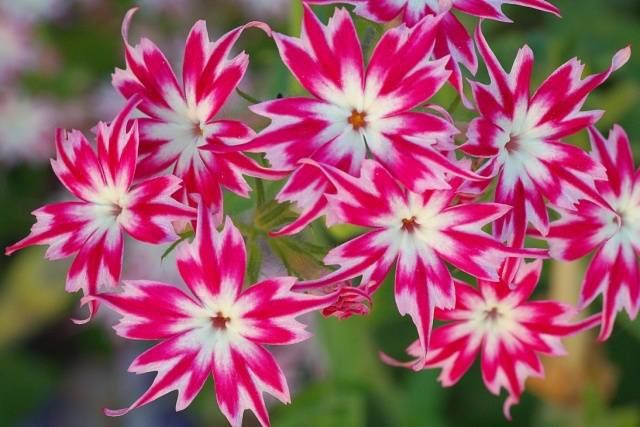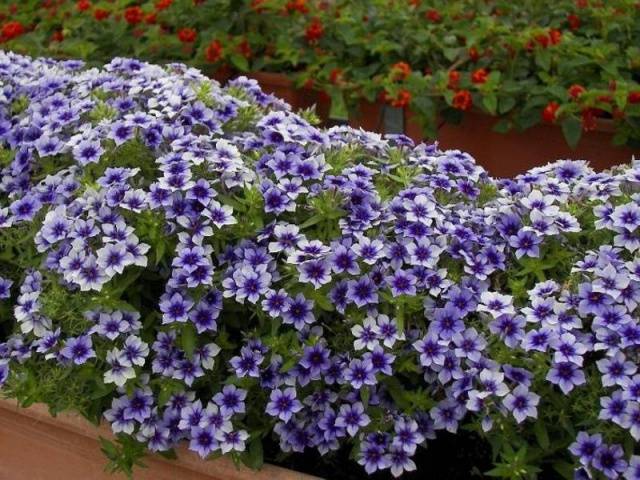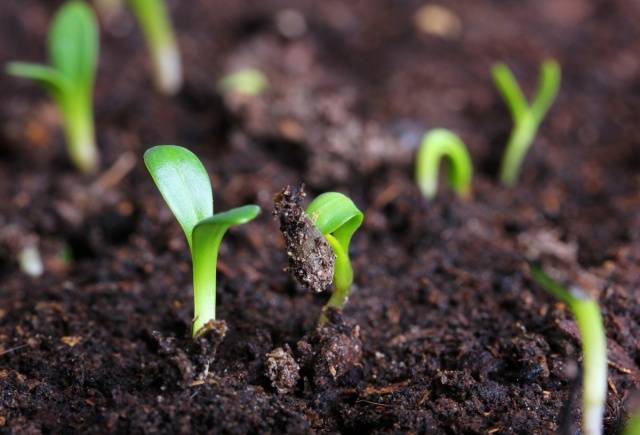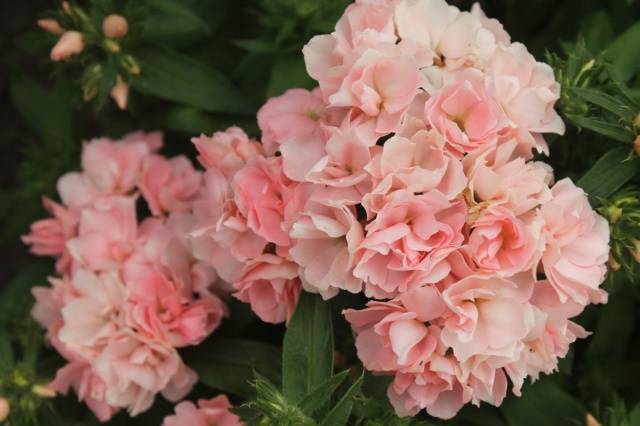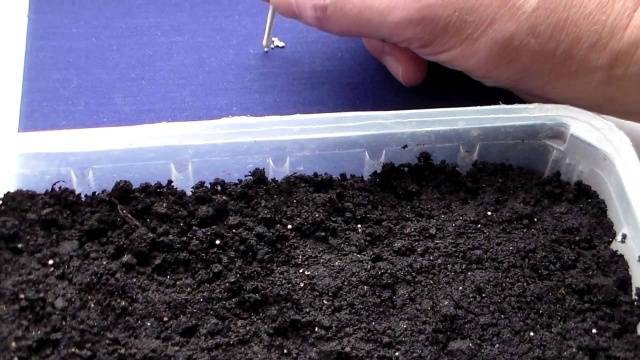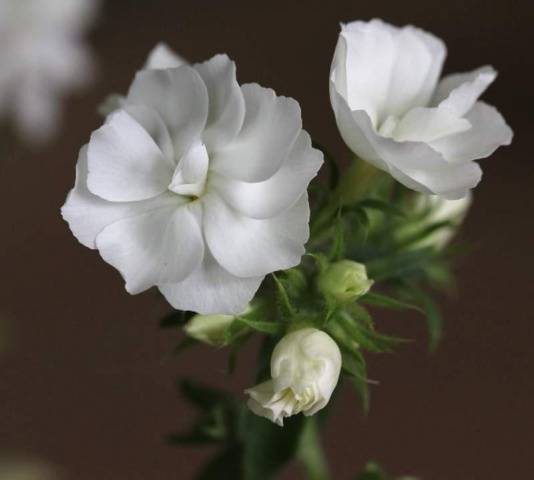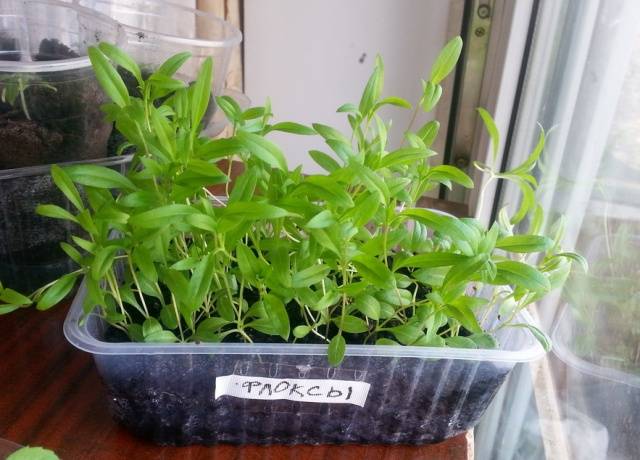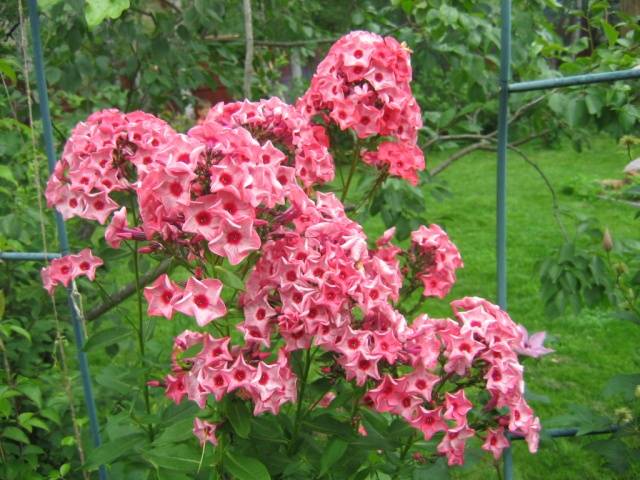Content
Phloxes are wonderful flowers loved by many gardeners and summer residents. Today, more than seventy species of phlox are known, but only half of them are grown in culture. And almost all varieties of these flowers are perennials. Perennial phloxes have a lot of advantages, but there is also a significant drawback - a limited color gamut (pink-crimson shades) and a monotonous structure of inflorescences. But annual phlox is replete with different colors, its petals are carved and resemble original snowflakes. Unfortunately, there is also a disadvantage here - it is much more difficult to grow an annual.
This article will be devoted to how to grow annual phlox from seeds, when to plant these flowers for seedlings and in the ground. From here you can find out about the features of flowers, about what methods of growing them exist, and what care annual phloxes need.
Description of the species
There are only a few species of annual phlox, and only one of them has become popular - the Drummond phlox. The homeland of this species is hot Texas, but the annual feels great in the continental climate of Europe and Russia.
Drummond Phlox Feature:
- a plant of small or medium height - from 12 to 30 cm;
- there are semi-shrub varieties that can grow up to 150 cm in the sun;
- flower stems are highly branched, herbaceous;
- leaves are small, opposite, have an oval-lanceolate shape;
- inflorescences are small, but abundant;
- the shape of the petals can be different: needle, star, round;
- the color of annual phlox is also varied (from white to salmon and blue);
- the structure of the flower can be either simple or double;
- annual phloxes exude a strong sweet aroma;
- flowers are suitable for decorating flower beds, borders, rabatok, they can be planted in boxes and flowerpots.
It has been noticed that the same varieties of annual phlox can have different heights, depending on the place of planting. So, on hills, spherical bushes grow to a maximum of 25-30 cm, while on a sunny plain, plants are able to stretch more than a meter.
Reproduction of annuals
The annual phlox, unlike its perennial relative, can reproduce in only one way - by seeds. It is believed that the germination rate of Drummond phlox seeds that fell to the ground in the fall will be about 70% in the spring. but ideal conditions are necessary for the friendly germination of flowers:
- loose soil;
- high humidity;
- warm climate;
- snowy winter, saving seeds from freezing;
- stable temperatures in winter.
Even if all these factors coincide, phlox self-seeding will have its drawbacks. Firstly, flowers will appear where they grew in the last season, and not in the area that the florist chose. Secondly, flowering of annual phlox, sown directly into the ground, will be later - the inflorescences will bloom only in the second half of summer.
Seedling breeding method
In view of all of the above, the cultivation of annual phlox from seeds by direct sowing into the soil is very rare. This method is only valid for southern regions with mild winters and early springs.
In other cases planting phlox with seeds is not accepted - the Drummond flower is grown through seedlings... Details on how to sow seeds and when to sow annual phlox for seedlings will be discussed further.
What you need to know
For a very long time, it was believed that the cultivation of annual phlox in culture is a difficult and ungrateful business. The fact is that the large seeds of these flowers did not want to germinate in any way, so it was not possible to get seedlings.
It turned out that annual phlox seeds do not need to be sprinkled with earth at all - they are simply laid out on the ground... This significantly reduces the time for spitting seeds. The second thing a florist should take into account at home is annual seeds need light to germinate.
So, when starting to independently grow seedlings of annual phlox, the following must be considered:
- Immediately after sowing the seeds, the containers must be placed in a warm and, most importantly, in a bright place. Therefore, containers can only be covered with transparent film or glass.
- The soil for phloxes needs loose, sandy, well-drained soil. Flowers do not tolerate increased acidity of the soil - the pH should be neutral.
- Phlox annuals definitely need frequent feeding. It is necessary to use only mineral complexes for flowers.
- Annuals tolerate picking well, therefore, seedlings must be seated in separate containers.
- To form a beautiful spherical bush, it is necessary to pinch the tops of the seedlings, starting from the first month of her life.
Sowing annuals
How to sow Drummond phlox seeds for seedlings will be described in more detail. It is recommended to start sowing in March, when there is already enough sunlight. Otherwise, you will have to artificially illuminate the boxes with flowers.
First, planting containers are prepared, which are suitable for plastic cups, general containers with transparent lids, peat glasses or tablets.
Containers for phlox seedlings are filled with a loose substrate consisting of turf soil, sand, humus and peat. The soil is lightly sprinkled with water and the seeds are laid out. The distance between the seeds should be at least two centimeters.
Each seed is lightly pressed into the soil, after which the plantings are sprayed from a spray bottle. Cover the containers with foil, lid or glass and send them to a warm, bright place.
The film must be removed from the container at the moment when phlox roots sprout from the seeds and begin to attach to the ground (sprouts appear only after that). Until that moment, the seedlings are ventilated every day, the condensate is wiped from the shelter, and the soil is slightly moistened.
Seedling care
Seedlings of phlox annual are unpretentious, tolerates diving well and does not require special attention. Phlox picking should be done 2-3 weeks after the flower seeds germinate. By this time, the plants should have formed a pair of true leaves.
Now it is important to observe the temperature regime (at least 20 degrees), to provide the seedlings of annuals with uniform light, and to water the plants regularly. When the seedlings are a month old, they are fed with a mineral complex. Before planting in the ground, phloxes are hardened and again a portion of fertilizers are added, mixing them with water for irrigation.
So that the bushes of annual phlox are thick and lush, the tops of the seedlings are pinched when 4-5 true leaves grow.
Landing and care
At the end of May, you can safely plant seedlings of annual phlox in the ground. For these plants, a sunny or semi-shady area with well-drained loose soil is chosen in the flowerbed.
An interval of at least 20 cm must be observed between phlox bushes and other plants. The distance between the holes depends on the variety of flowers and their estimated height (20-40 cm).
A phlox seedling is carefully transferred into the prepared hole, straightening its long roots. It remains only to lightly sprinkle the plant with earth and tamp it with your fingers. Planted flowers are watered with warm water.
Seedlings of annual phlox take root well, and subsequently, these flowers will not need complex care.
The florist needs to do the following:
- In annual phlox, the roots overheat, so in the heat you need to regularly water the plants with cool water.
- A couple of weeks after planting the seedlings, the flowers spud. The soil is regularly loosened, as the roots must "breathe".
- You should constantly pinch the shoots of annual phlox: first to form a bush, then to rejuvenate it (the tops with faded inflorescences are cut off).
- At least four times over the summer, annuals need to be fed with mineral fertilizers.
- At the end of the season, cut off a few dried shoots with phlox seeds and put them in a box.
The basic rule of caring for annual phlox: do not interfere with their development and growth. The florist will be able to significantly facilitate his work if he mulches the soil around the bushes.
Conclusion
Phlox Drummond will delight with lush flowering from early June to late September. These are some of the most unpretentious flowers, and the main difficulty lies in their reproduction.
Photos of delicate annuals are so beautiful that it is simply impossible to remain indifferent. If you figure it out, sowing seeds and growing phlox seedlings is not such a difficult process. Knowing the simple rules, you can be guaranteed to get friendly shoots and strong seedlings.

